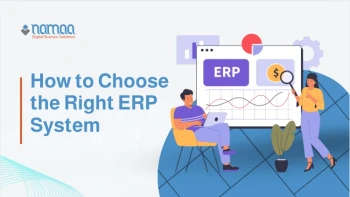Conversion Rate Optimization (CRO) in E-commerce: The Key to Success
Conversion Rate Optimization (CRO) is the true key to the success of any e-commerce store. Imagine attracting thousands of visitors to your store daily, yet only a small percentage complete a purchase—this is where the problem lies! Simply increasing traffic isn’t enough; those visitors must be converted into actual customers.
To achieve this, you need to understand your visitors’ behavior and enhance their experience, whether through an attractive design, optimal loading speed, or compelling text that encourages them to take action. CRO is not just a minor adjustment; it’s a comprehensive strategy that ensures you maximize the value of each visitor and achieve the highest possible return from your online store.
What Is Conversion Rate Optimization (CRO) in E-commerce?
Conversion Rate Optimization (CRO) in e-commerce simply means increasing the number of visitors who turn into actual customers rather than just browsing without making a purchase. It’s not just about attracting visitors; it’s about convincing them to complete a purchase or take any valuable action, such as signing up for an email list or filling out a request form.
This process relies on understanding customer behavior, analyzing data, and making strategic changes to the store to improve user experience and increase conversion rates. Sometimes, a small change—like adjusting the color of a purchase button or simplifying the checkout process—can have a significant impact on sales. Successful businesses leverage user data to test different ideas and determine what actually works in improving engagement and conversions.
By improving site speed, providing a seamless user experience, and optimizing page designs, tangible results can be achieved. The key isn’t random changes but rather data-driven improvements and real testing to determine what best suits your target audience. In short, CRO is the secret to making the most out of every visit to your online store.
What Are the Three Stages of Conversion Rate Optimization?
CRO in e-commerce isn’t a random process; it follows three essential stages:
Research and Analysis:
The journey starts with gathering data on visitor behavior within the site to identify obstacles preventing them from making a purchase or engaging. Tools like Google Analytics help track where visitors drop off, while heatmaps (such as those from Hotjar or Crazy Egg) show the most and least interactive areas of a page. Surveys can also provide direct feedback from users.
Testing and Implementation:
Once potential issues are identified, A/B testing and strategic modifications are conducted to determine which improvements yield the best results. These changes might include redesigning a page, simplifying the checkout process, or improving promotional text. The goal is to apply small changes and measure their impact before implementing them site-wide.
Monitoring and Continuous Improvement:
After implementing changes, their performance must be continuously monitored. Did sales increase? Did cart abandonment rates decrease? If results don’t improve, further adjustments may be necessary. CRO is an ongoing process because user behavior constantly evolves. What works today may not be as effective in a few months, so continuous analysis and optimization are crucial.
Key Factors Affecting Conversion Rates in E-commerce
Several factors influence conversion rates in online stores, some obvious and others less direct but highly impactful.
User Experience (UX): The design and ease of navigation play a major role in retaining visitors and encouraging them to take action. A slow or complicated website can drive visitors away before they complete a purchase.
Content Quality and Promotional Offers: Product descriptions should be clear, product images high-quality, and customer reviews available to build trust. Offers like free shipping or first-time buyer discounts can provide additional incentives to complete a purchase.
Website Speed: Studies show that even a slight delay in page loading time can cause a significant drop in conversions.
Payment Options: Offering diverse and secure payment options makes the checkout process more convenient, reducing cart abandonment rates.
Customer Support: Effective support—via live chat or email—can help alleviate concerns that may prevent a visitor from making a purchase.
Data Analysis Tools for Improving Conversion Rate Optimization (CRO)
Data analysis is essential for CRO in e-commerce, as it helps businesses understand customer behavior and make informed decisions. Here are some key tools:
Google Analytics: Provides comprehensive reports on traffic sources, bounce rates, top-visited pages, and customer behavior, helping identify weak points in the user journey.
Hotjar & Crazy Egg: Offer heatmaps and session recordings to visualize how users interact with the website and where they face obstacles.
Optimizely & VWO: Specialize in A/B testing, allowing businesses to experiment with changes like call-to-action buttons or headlines and analyze their impact.
HubSpot & Mixpanel: Track user behavior throughout their shopping journey, helping refine personalized marketing strategies.
Effectively utilizing these tools can enhance user experience, increase sales, and improve overall store performance.
How to Measure Conversion Rate in Your E-commerce Store?
To improve your store’s performance, you first need to measure how effectively it converts visitors into customers. The basic formula for calculating conversion rate is:
(Number of Completed Actions ÷ Total Visitors) × 100
For example, if 10,000 visitors come to your store in a month, but only 500 complete a purchase, your conversion rate is 5%.
For more detailed insights, you can use tools like Google Analytics, which provides reports on visitor interactions, abandoned carts, and sales funnel performance.
Another useful technique is Conversion Funnel Analysis, which identifies points where potential customers drop off before completing a purchase. If many visitors add items to their cart but don’t finish the checkout process, issues such as limited payment options or unexpected fees (like shipping costs) might be the cause. Understanding these factors allows you to optimize your store and increase conversion rates.
Tips to Improve Conversion Rates in E-commerce
If you want to boost your store’s sales without spending a huge budget on ads, you need to focus on CRO. Here are some essential tips:
Improve Website Speed: Every second of delay in page load time can lead to lost customers. Optimize images, minimize unnecessary code, and use a fast hosting service.
Simplify the Shopping Experience: Avoid forcing users to create an account before purchasing and reduce the number of steps required to complete a checkout.
Enhance Product Presentation: Use clear images, detailed descriptions, and customer reviews to build trust and encourage purchases.
Utilize A/B Testing: Experiment with small changes like button colors, product placements, or promotional wording to determine what resonates best with customers.
Engage with Customers: Send reminders about abandoned carts and provide live chat support to assist hesitant buyers.
Building a strong relationship with customers and making the purchasing process as smooth as possible will positively impact your store’s conversion rate.
Final Thoughts
Ultimately, Conversion Rate Optimization (CRO) in e-commerce is an ongoing process that doesn’t stop at one adjustment or minor improvement. The key lies in a seamless user experience, a fast and easy-to-navigate website, and a hassle-free purchasing process.
Every small detail—from button designs to the clarity of promotional offers—can influence purchasing decisions. Don’t hesitate to experiment with new strategies, test different changes, and rely on data-driven decisions.
 Home
Let's think together
Articles
About
Contact Us
عربي
عربي
Home
Let's think together
Articles
About
Contact Us
عربي
عربي
.webp)





